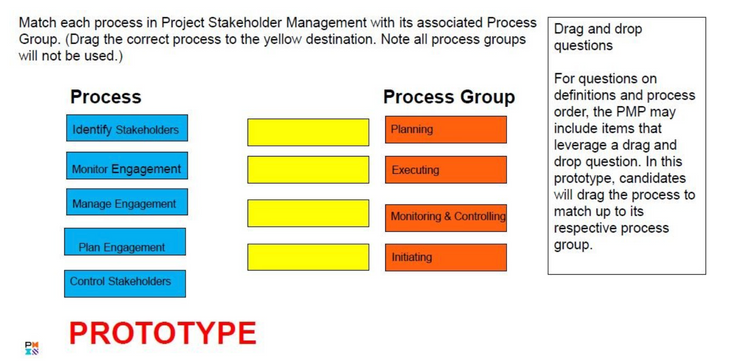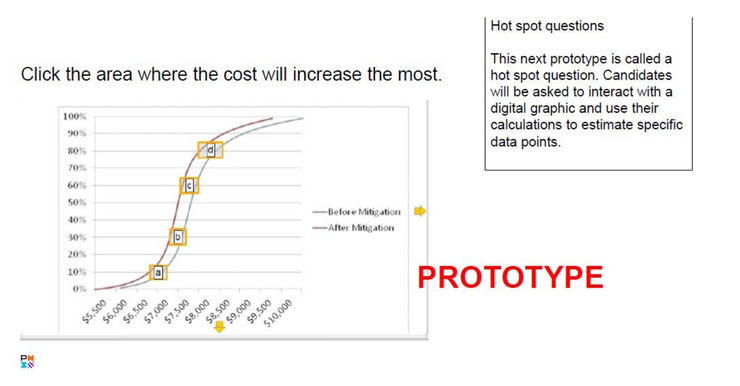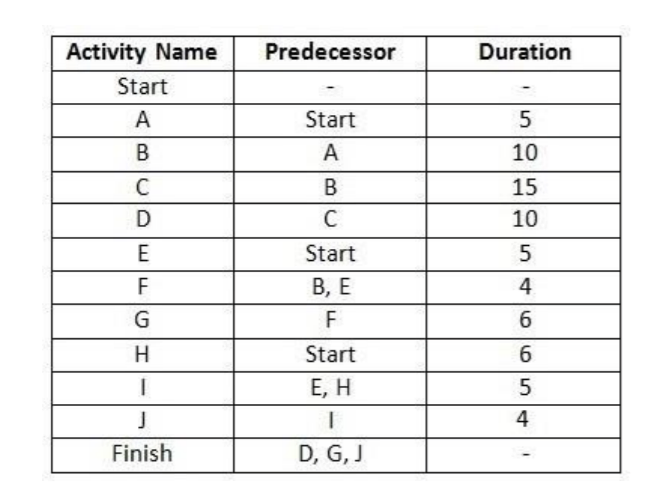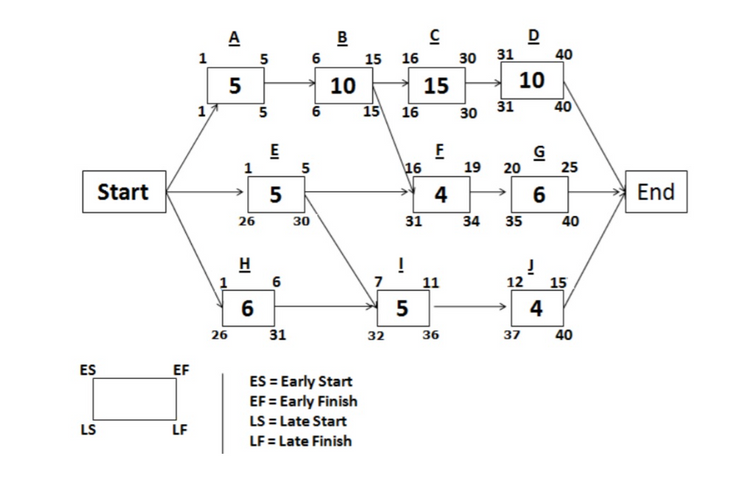Read through any active PMP forum on the internet or talk to any PMP exam candidate, and they’ll swear by solving a variety of PMP practice questions and understanding its all possible types and styles.
The PMP certification exam is notoriously unpredictable, and PMI has a reputation of surprising candidates when they least expect it. Therefore, in this comprehensive guide to PMP exam questions, I will discuss all the possible types of PMP exam questions that you can expect during the grueling 230 minutes of your PMP certification exam.
In addition to the PMP exam question types, I’ve also added two more dimensions to PMP exam questions, i.e., style of exam questions and exam question topics (popular topics from where you can expect questions in the PMP exam)
Additionally, in this detailed PMP exam questions guide, I’ve also answered the following questions for you:
-
How many questions does the PMP exam have?
-
How many correct answers do you need to pass the PMP exam?
-
What are pretest questions and the purpose of using them in the PMP certification exam?
-
How to spot the correct answers while answering PMP certification exam questions?
Types of PMP Exam questions
This first section covers the list of PMP exam questions types, which are:
-
Multiple-choice questions
-
Multiple response questions
-
Matching questions
-
Hotspot questions
Multiple-choice questions
Until 2020, this exam question type was the only type used in the PMP exam. We’re all probably familiar with this type of question if we’ve done other certification exams in the past. In this question type, candidates must select one correct answer from a list of choices. Generally, there would be four choices from which you will have to choose the right option. This type of question still dominates the majority of the PMP certification exam. Easy as it might sound, these questions can be pretty difficult for candidates because most candidates get stuck between two very close choices in these types of questions.
Here is an example of a multiple-choice question below:
Baselines are an important input to a number of project processes. Outputs of many processes raise change requests to these baselines. Which of the following is not a valid project baseline?
A. Scope baseline
B. Risk baseline
C. Cost baseline
D. Schedule baseline
Correct Answer: B
Explanation: The risk baseline is not a valid project baseline. It is an accepted and approved project plan.
Multiple-response question
This is another type of PMP exam question type that has been introduced in the 2021 version of the PMP certification exam. The candidate has to select multiple correct responses from the list of options presented to them in the question type. All correct answers must be marked to get the question right and earn a point. Generally, the candidate has to select two or three correct answers, and the question will specify the number of correct answers.
Here is a multiple-response sample question below:
Due to a significant delay in some scheduled tasks, the project manager had to reprioritize several subsequent tasks to fix the problem. Unfortunately, that didn’t work either, and now the project manager must escalate the issue.
Which documents must the project manager look at from the options below to escalate the issue? (Choose two answers)
A. Change management plan
B. Stakeholder engagement plan
C. Communications management plan
D. Risk management plan
E. Configuration management plan
Correct Answer: B and C
Explanation: This delay has caused a scheduling issue that must be escalated. The project manager would use the stakeholder engagement plan since it will tell him how to engage with stakeholders. The communications management plan helps ensure that his messages are communicated to stakeholders in various formats and means as defined by the communication strategy.
Matching Question
The third type of PMP Exam question is called a matching question. This kind of question includes two sets of items that need to be matched. You must match all the options correctly to earn a mark.
Here is an example of a matching question below [from the PMI website]:

Fill-in-the-blank questions
The next question type is a fill-in-the-blank question. In this type of question, the candidate writes the missing information into the blank space.
The example below shows a fill-in-the-blank question:
______________ is the name of the technique used for doing root cause analysis.
A. Kaizen
B. Ishikawa Diagram
C. A3 thinking
D. Six Sigma
Correct Answer: B
Explanation: Ishikawa diagrams or fishbone diagrams are used to perform root cause analysis
Hotspot questions
The final question type is the hotspot question. In this question type, the candidate is presented with a picture instead of a text-based question. The candidate has to interact with the image and click on an area of the image to provide the correct answer.
Here is an example of a hotspot question below [from the PMI website]:

Different Styles of PMP Exam Questions
In addition to the various question types, PMI also has crafted different questioning styles to test your project management knowledge. These are styles that have been used consistently by PMI in the PMP certification exam. They range from directly testing a definition from the PMBOK to complex and lengthy scenario-based questions that require situation analysis before choosing an answer.
In the list below, I’ll cover all the different styles of PMP Exam questions.
-
Definition/knowledge Based questions
-
Formula based questions
-
Interpretational questions
-
PM Technique based questions
-
Scenario/Situational Questions
-
PMP ITTOs based questions
Definition/Knowledge-based questions
Knowledge-based questions rely on your memory and understanding of the terms in the PMBOK Guide. They are direct definitions or concepts taken from the PMBOK Guide and cover topics such as the project management process groups, the individual processes used across numerous knowledge areas, and the inputs, tools, and techniques applied in a project management process.
Here’s an instance of a knowledge-based question:
You have received an urgent call from management and they asked you to find the cost estimate of a new project. Since time is critical and you have to provide them with the cost estimate, which technique will you use to calculate the project cost?
A. Parametric
B. Analogous
C. Bottom Up
D. Triangular Estimate
Correct Answer: B
Explanation: In all estimating techniques, the analogous cost estimation is the fastest. In this estimation, you see the cost of any past similar project and apply the parameters to your project and get the approximate cost. Reference: The PMBOK Guide, 6th Edition, Page: 244
Formula based questions
While preparing for the PMP certification exam, you will discover many mathematical formulas used in different PMP exam topics such as schedule, cost, procurement, risk, and communication. You’ll have to apply formulas to solve these questions.
Here’s an example of a formula-based question:
Assuming your past performance will be the same as the future performance, you have calculated the EAC as 250,000 USD. Your previous budget was 200,000 USD and you have earned 50,000 USD to date. What is the money spent to date?
A. 40,000 USD
B. 50,000 USD
C. 90,000 USD
D. 62,5000 USD
Correct Answer: D
Interpretational questions
Here’s an example of an Interpretational question:
A. The project manager misjudged the local labor market and was not able to hire enough workers, and some machinery broke down requiring expensive repairs.
B. The project manager was able to find a new vendor who supplied materials for less than the original estimates, and process improvements helped shorten the schedule.
C. The project manager failed to manage stakeholders effectively, and community protests delayed the project, causing the project to consume fewer resources.
D. A subcontractor finished some tasks more quickly than estimated, and the project had to pay more for materials than originally estimated.
Answer: D
Explanation: The correct answer is that a subcontractor finished tasks more quickly than estimated, and the project had to pay more for materials than originally estimated, because both of those events align with the SPI and CPI provided in the scenario. An SPI of 1.05 means that the project is using its time more efficiently than originally estimated; a CPI of less than 1 indicates that the project is over budget; therefore, the correct answer is one that accounts for a project that is ahead of schedule and over budget.
Project Management Technique based questions
In the world of project management, several techniques can be employed to plan, monitor, and control a project. For example, these could be a precedence diagramming method (PDM) or critical path method in schedule management. In such questions, you will have to apply the technique and arrive at the right answer.
Here’s an example of a network diagram question from the schedule management chapter:
Based on the table shown below identify the Critical Path (draw the network diagram considering day 1 as the first day of the project. Answers to questions are based on the diagram considering day 1 as the first day of the project).

A. Path HIJ
B. Path ABFG
C. Path EFG
D. Path ABCD
Correct Answer: D
Explanation: See the image below for an explanation.
Scenario/Situation Questions
This has been the dominant style of questioning in the PMP exam since the start of 2021. Situational questions will describe a situation that the project is facing, and as a project manager, you have to decide how to deal with the situation.
Situational questions usually end with statements like these given below:
1. What should the project manager do next?
2. What should the project manager do first?
3. How could have the project manager prevented the situation from happening?
Here’s an example of a situational question:
An innovative blockchain software product is nearing completion. Since the software is one of a kind, a software training program for end-users has been included within the scope of the project. However, the project manager has noticed that only a handful of end-users have completed the training so far. What must the project manager do next?
A. Update the risk register to document the concern and develop a plan to ensure end-users complete their training
B. Revise the risk register and discuss it at the next project status meeting.
C. Dedicate additional resources post-implementation of the project to mitigate the risk.
D. Modify the project schedule to account for training delays.
Correct Answer: A
Explanation: The project manager should document the risk and then work with the stakeholder to address this risk. They are probably aware of it and need help to complete the step.
PMP ITTOs based question
ITTO based questions are also a popular type of questioning style in the PMP exam. Each PMP knowledge area has various processes in it, and each process has inputs, tools, techniques, and outputs. The exam tests you on your understanding of these inputs, tools, techniques, and outputs, and hence, questions are more direct than situational questions.
Here’s an example of a PMP ITTOs question:
You are in the process of developing the strategy to engage your project stakeholders. Which of the following will you not do during this process?
A. Develop a stakeholder management plan
B. Develop stakeholder register
C. Update the project schedule
D. None of the above
Correct Answer: B
Explanation: The stakeholder register is developed in the identify stakeholders process. Reference: The PMBOK Guide, 6th Edition, Page: 507, 514
PMP Exam Topics Questions
Predictive approach questions
Here’s an example of a predictive situational style question:
You are managing a complex, critical project and have put in a lot of effort to make the team technically proficient during the process. The project is in the final acceptance testing stage when a senior resource, Tiffany, comes to discuss her plans of continuing her education and leaving this current assignment. She would require a positive recommendation for work from you to fulfill admission requirements. What should you do?
A. Tell her that you wouldn’t recommend her as she has broken your trust by leaving the project before closure
B. Ask the Functional Manager to remove her from the project and give her a negative recommendation
C. Discuss and plan her exit so that it would have the least impact on the project schedule
D. Compliment Tiffany on her decision and suggest that she can leave the project whenever she likes as you would handle her additional responsibilities
Correct Answer: C
Explanation: The Project Manager should take steps to minimize the impact of any change that can affect the ‘triple constraints in the project. Option D is wrong and it sets a wrong example.
Here’s an example of an agile PMP question:
A project’s daily stand-up meetings are long, often lasting more than two hours. The project team uses the stand-up meetings for extended discussions about solutions to project obstacles. What should the project manager do to improve the daily stand-up meetings?
B. Timebox each speaker using a stopwatch in stand-up meetings.
C. Nominate a team member to manage obstacles and schedule meetings to discuss possible solutions.
Correct Answer: D
Explanation: Daily stand-ups are important meetings for agile teams. The project manager should coach the team in how a daily stand-up meeting is run and what is discussed. Teams run their own stand-ups, and when run well, they can be very useful. Daily stand-ups are typically 10-15 mins and three questions are answered: 1 What did you do since the last stand-up? 2) What will you do today? 3) Are there any impediments or roadblocks? Hold separate meetings to discuss the blockers and find the solution.
Hybrid approach questions
Many companies have realized that it’s not an either-or battle between predictive and agile approaches in the project management world. Instead, both approaches can coexist in an organization and even in the same project. The combination of predictive and agile frameworks in the same project or program is called the hybrid approach, bringing a healthy balance to a project. While evolving the PMP exam into its 2021 version, PMI has ensured a fair number of hybrid project management questions in the PMP exam.
Below is an example of a hybrid PMP question:
A. Select an agile lifecycle, with a common user story and three-week sprints.
B. Select a waterfall project approach for deliverables, with firm milestones and change control procedures.
C. Select a hybrid project approach; position deliverable 2 as a single agile sprint embedded in an overall waterfall project.
D. Select a hybrid project approach; position deliverable 2 as a single waterfall phase embedded in an overall agile project.
Correct Answer: D
Explanation: In this project, two (2) deliverables have unknown durations or changing requirement sets-both of which are appropriate conditions for use of the agile lifecycle. Deliverable 2 requires strict schedule control and external dependencies, which require a traditional or waterfall project lifecycle.
With the various types of questions out of the way, let’s answer some common questions about the PMP exam.
1. How many questions does the PMP exam have?
The current PMP certification exam contains 180 questions, out of which 175 are scored. The remaining five are not scored. These questions come from 3 different domains, and they are as follows:
People: 42%
Process: 50%
Business Environment: 8%
Apart from this, you’ll encounter numerous questions from the types and styles of questions mentioned above. It is generally believed that situational questions form the bulk of the exam, but nobody knows if it’s true. PMI keeps on changing the Exam Content Outline (ECO) and the exam format.
2. How many correct answers do you need to pass the PMP exam?
The passing grade for the PMP exam used to be about 61% before 2007. In 2007, PMI changed the passing percentage for the PMP exam, and it still remains a secret. Your exam results page will only show if you were ‘Below Target,’ ‘On Target’ or ‘Above Target’ in the three different domains of People, Process, and Business Environment.
3. What are pre-test questions and the purpose of using them in the PMP certification exam?
In the current exam, there are five pre-test questions. These are not scored and inserted throughout the exam. PMI puts in these questions to determine if they are valid by analyzing numerous test takers’ results. If found valid, they can be used as questions in the actual exam.
4. How to spot the correct answers while answering PMP certification exam questions?
Spotting correct answers in the PMP exam boils down to factors such as your knowledge of the PMP exam materials, your comprehension, and situation analysis abilities, and types of questions you solved while doing practice exams. If you’ve taken the time to go over the PMP exam materials thoroughly, understood and absorbed the concepts, invested the time to practice various practice tests, and filled the gaps in knowledge, you will be well-positioned to tackle the questions in the PMP exam.
Here are four simple steps to get questions right in the PMP exam:
1. Read the question patiently and slowly. Focus on comprehending the situation or challenge in the question.
2. Read all options (again slowly). Make sure you understand them.
3. Eliminate extreme answer responses. Look for answer choices that indicate an impulsive decision. They are generally wrong.
4. Evaluate the remaining options in the context of the question and choose the best possible option.
Most answers will link back to a concept that you have read before. If you don’t know the answer, take a best guess. That’s better than not answering the question since there aren’t any negative marks for incorrect answers.
Final words
The PMP exam is challenging, and it’s evidenced by the high failure rates on the first try. It’s not only a test of your knowledge of the PMBOK but also your ability to apply the knowledge to a real-life situation. However, you can achieve this coveted designation with focus, discipline, patience, and consistent effort.
In addition to reading the PMBOK at least once, practicing various PMP exam practice questions is a time-tested and proven strategy for clearing the PMP exam.









